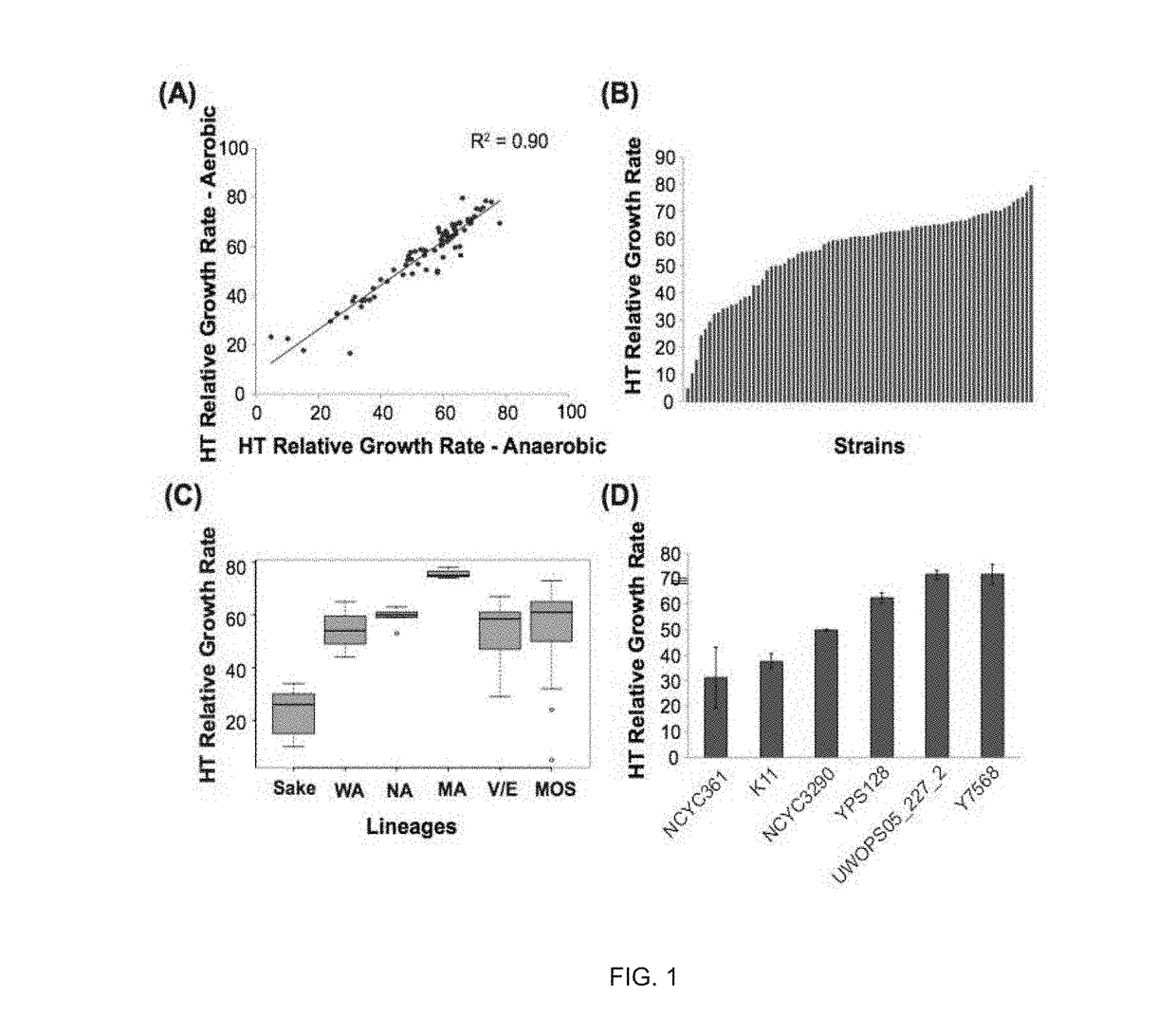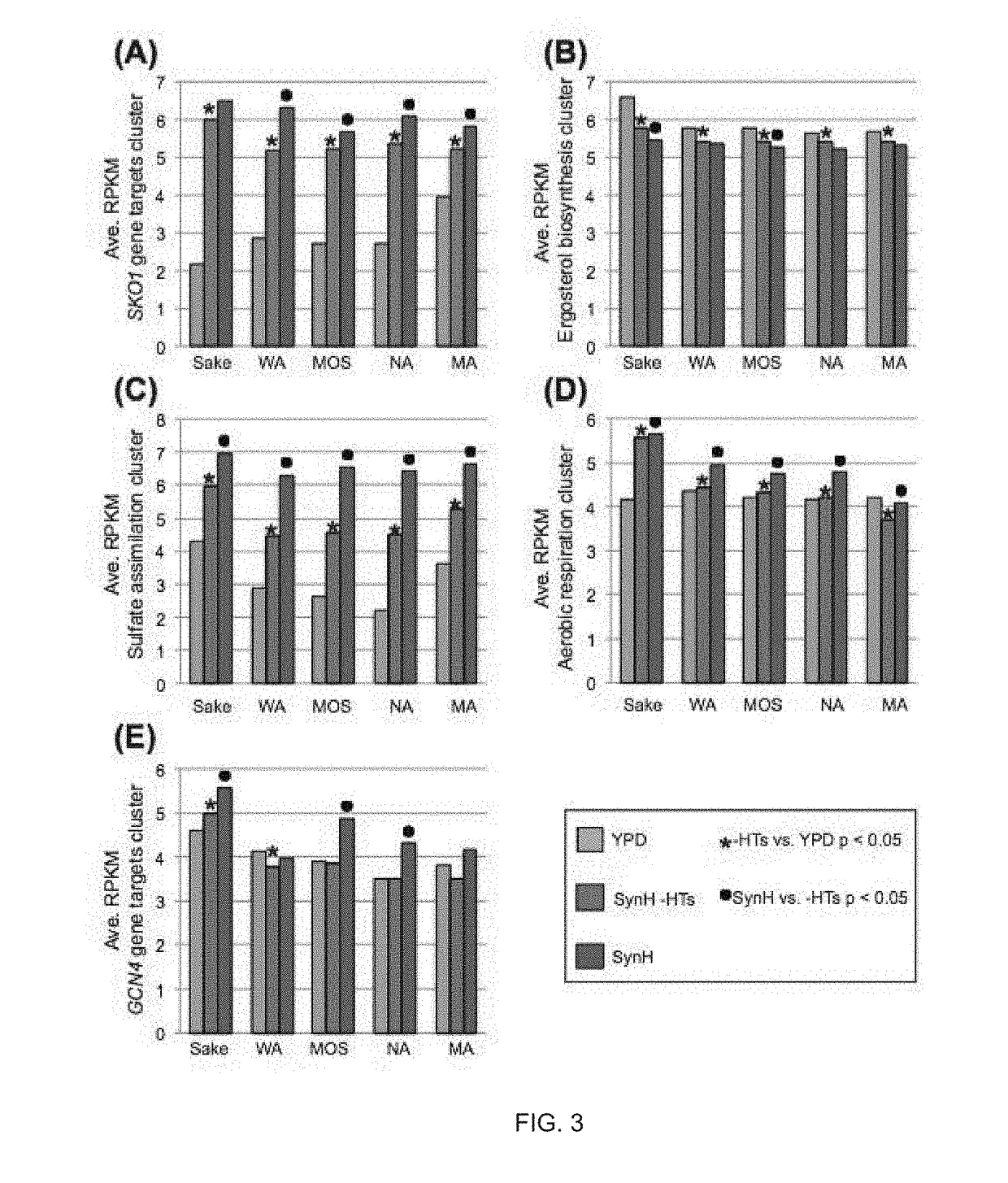Genes that improve tolerance to lignocellulosic toxins when overexpressed in yeast and methods of use in biofuel production
a technology of lignocellulosic toxins and genes, applied in the field of biofuel production, can solve the problems of high osmolarity, affecting the yield of ethanol, and molecules that are toxic to microorganisms used for fermentation, and achieve the effect of increasing the tolerance to lignocellulosic toxins
- Summary
- Abstract
- Description
- Claims
- Application Information
AI Technical Summary
Problems solved by technology
Method used
Image
Examples
example 1
g Multi-Level Natural Variation Across Saccharomyces cerevisiae Isolates to Improve Lignocellulosic Hydrolysate Tolerance
[0078]This example describes a strategy to both identify strains for industrial use and understand toxin effects by comparing and contrasting yeast strains with differential toxin tolerance. Most of the studies trying to elucidate the mechanisms of toxin inhibition have used lab-domesticated strains, which poorly represent the stress-tolerance potential of the species (24-26). By studying wild isolates that display substantial genetic and phenotypic differences, the inventors can identify variation that may provide previously unrecognized modes of protection against toxins. Here, the inventors leveraged natural diversity in distinct lineages of Saccharomyces cerevisiae to explore strain-specific responses to a synthetic mimic of ammonia fiber expansion (AFEX)-pretreated corn stover (ACSH) (23, 27). Using a synthetic hydrolysate allowed us to dissect the transcript...
PUM
| Property | Measurement | Unit |
|---|---|---|
| pH | aaaaa | aaaaa |
| pH | aaaaa | aaaaa |
| pH | aaaaa | aaaaa |
Abstract
Description
Claims
Application Information
 Login to view more
Login to view more - R&D Engineer
- R&D Manager
- IP Professional
- Industry Leading Data Capabilities
- Powerful AI technology
- Patent DNA Extraction
Browse by: Latest US Patents, China's latest patents, Technical Efficacy Thesaurus, Application Domain, Technology Topic.
© 2024 PatSnap. All rights reserved.Legal|Privacy policy|Modern Slavery Act Transparency Statement|Sitemap



